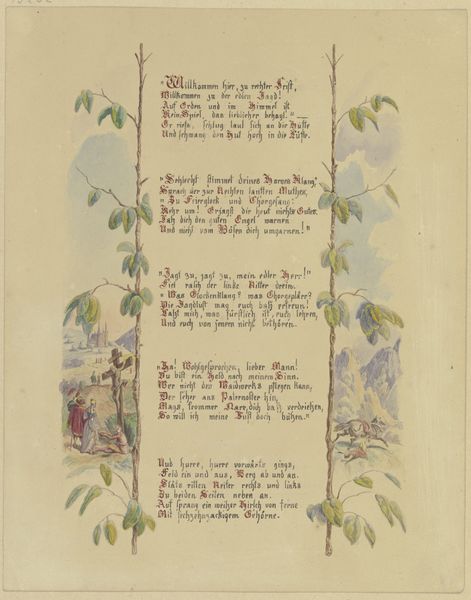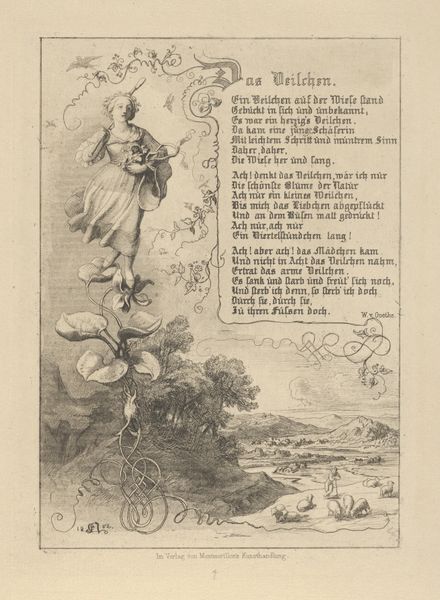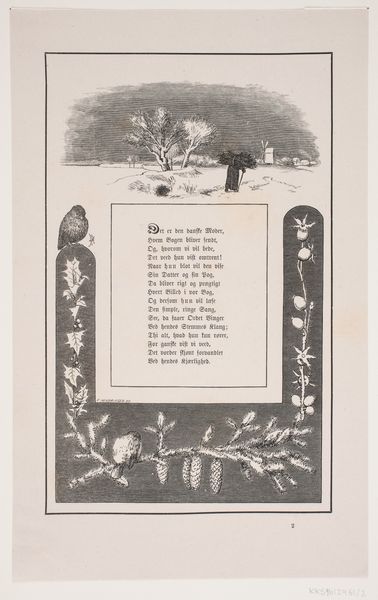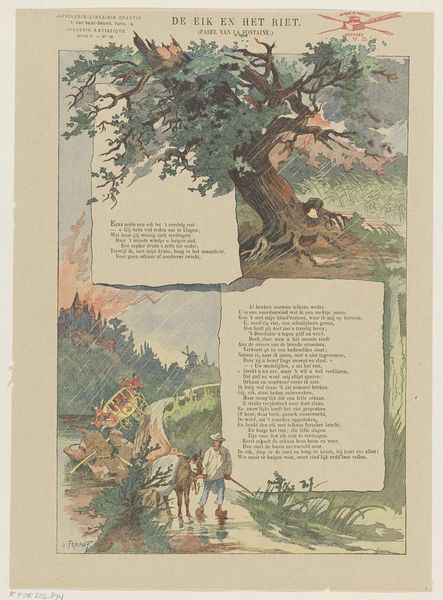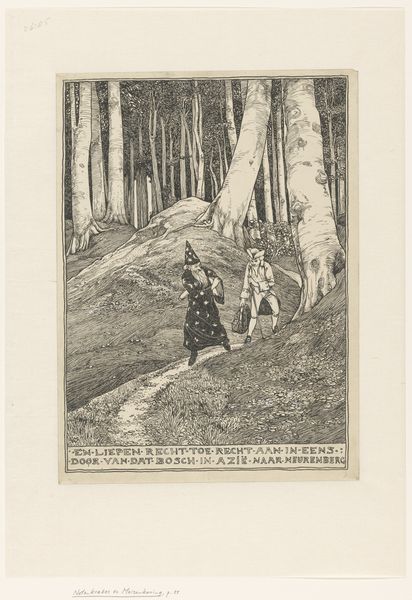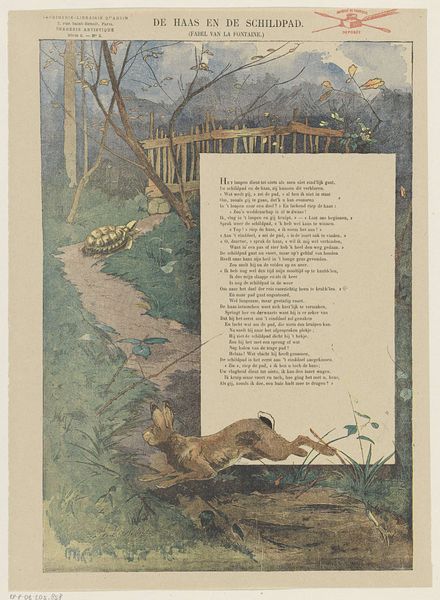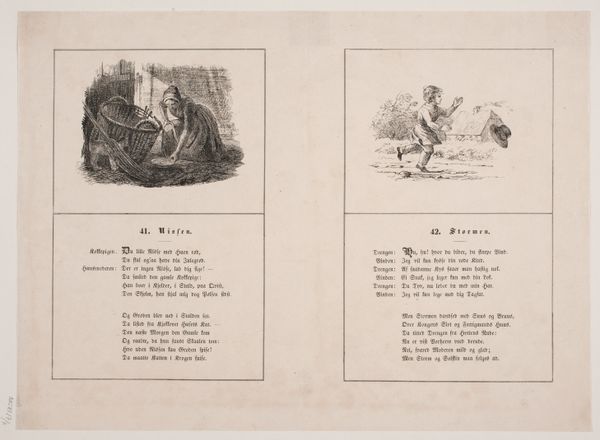
drawing, watercolor, ink
#
drawing
#
16_19th-century
#
landscape
#
watercolor
#
ink
#
coloured pencil
#
romanticism
#
genre-painting
#
history-painting
Copyright: Public Domain
Editor: This is "Der Rheingraf mit seinen Gefährten" by Eugen Klimsch, likely from the 19th century, rendered in ink and watercolor. There's almost a storybook quality to it. The scene, the riders, even the text in the upper portion—it gives off a nostalgic feeling, almost theatrical. How do you interpret this work? Curator: The theatricality is a great observation! Think about the 19th century and the rise of Romanticism, along with burgeoning national identities. History painting like this wasn’t just about documenting events, it was about constructing a narrative, shaping a collective memory. Notice the prominent text – seemingly a poem? Consider it as framing the visual narrative, adding layers of meaning and moral instruction to this representation of Rhineland history. How do you think the context of this being displayed, perhaps in a bourgeois home, changes its meaning? Editor: That's fascinating. I hadn’t considered how display alters the piece. Placing it in a home transforms it into a kind of historical validation for the homeowner, like claiming a connection to a glorious past. Curator: Exactly! It’s about associating with that imagined history and projecting an identity. Moreover, look at the composition. The landscape itself isn't just background; it evokes a specific regional identity linked to ideas of Germanic origins, the power of the natural world but in conjunction with its influence in establishing their statehood, therefore impacting future generations to embrace its value. Editor: So, it's a visual and textual argument for a specific kind of national identity? It's not just a picture, but almost a political statement within a domestic setting. Curator: Precisely. By controlling how their past is envisioned, institutions and individuals exert soft power influencing public thought within the societal landscape of the Rhineland. What I wonder is: whose history does this foreground and whose does it potentially erase or marginalize? Editor: That really reframes my perspective. It’s more than just a charming historical scene, it is carefully constructed with significant contextual weight, that promotes regional historical preservation within households! Thanks for pointing that out. Curator: My pleasure. Recognizing how art like this functions within its socio-political landscape adds depth to how we view it, not just as art, but as active participants in shaping our understandings of the past.
Comments
No comments
Be the first to comment and join the conversation on the ultimate creative platform.
